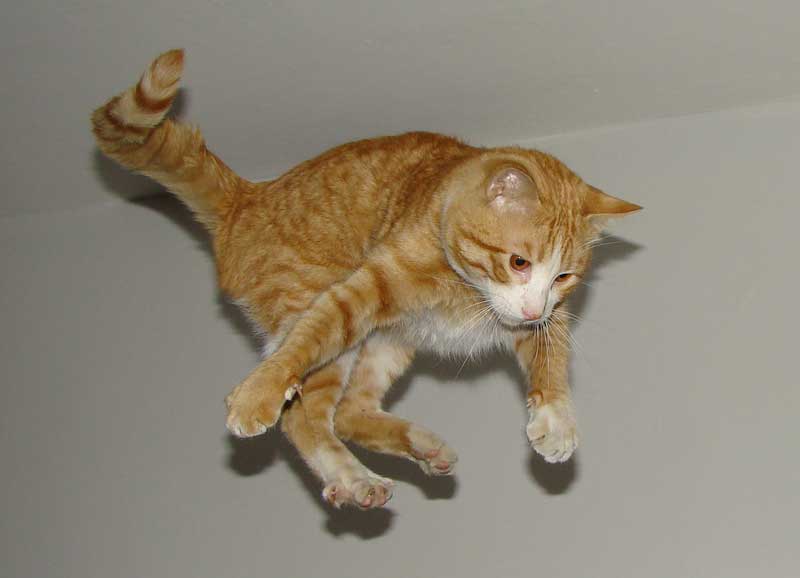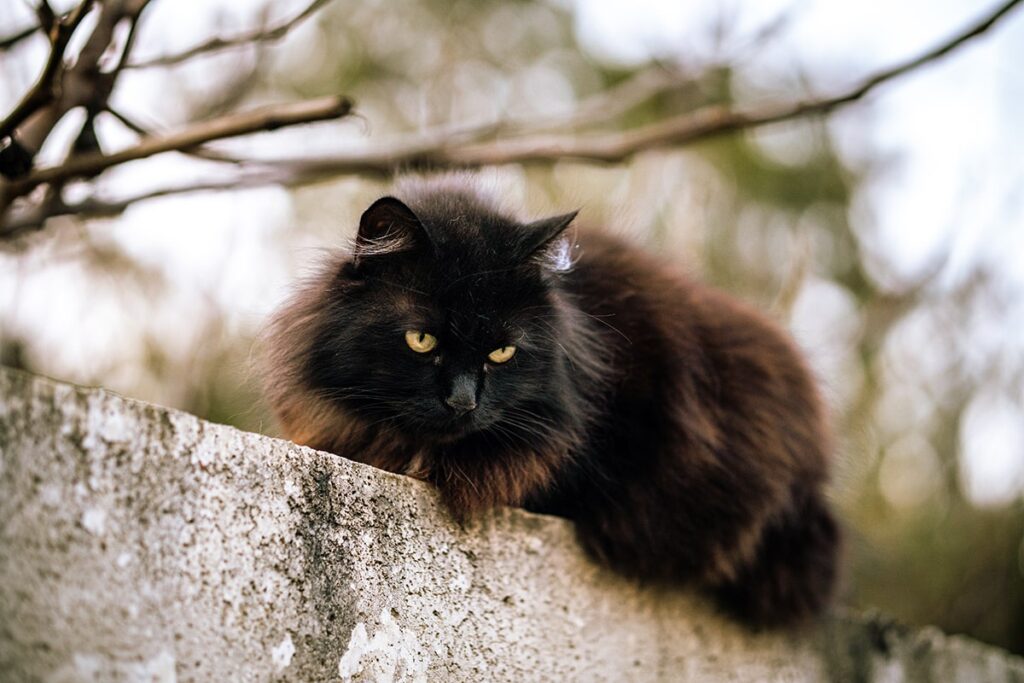- Spawn: In just seven years, a pair of cats and their offspring can theoretically produce 420,000 kittens
- Sleep: Cats spend 70% of their lives sleeping
- Longest cat: The longest cat ever was 1 m and 23 cm long
- Video: The oldest video of cats on YouTube is from 1894
- Climb down: A cat can’t climb down a tree head first because all of its claws face the same direction. Therefore, to get down, it has to climb ‘end first’
- Number of cats: There are around 500 million domestic cats worldwide. Among these, there are about 40 recognized species
- Latin: The words for cat in various Western languages (kat, katze, cat, chat, etc.) derive from the Latin ‘catus’ meaning “house cat” and is the opposite of ‘feles’ meaning “wild cat”
- Speed: A cat can move up to 49 km/h in short distances
- Jump: Cats can jump up to 5 times their own height in a single jump
- Fall: In 1987, 132 cats that had been brought to the vet after falling from tall buildings were examined. 90% of the cats survived treatment and only 37% needed emergency treatment to survive. One of the cats had fallen from a height of 32 stories and escaped with a collapsed lung and a broken tooth, and was released after only 48 hours!

Fact: Cats have adapted to life in trees and can survive falls from great heights. In 1987, a cat fell from a 32-story high-rise building and escaped with a collapsed lung and a broken tooth!
Facts about cats and dogs
- Sounds: Cats can make around 100 sounds. Dogs can only produce around 10
- Popularity: Worldwide, the cat is the most popular pet, with more cats than dogs being kept globally. However, there are regional differences: Europe, the US and Asia have more cats than dogs, while Africa and Australia have more dogs than cats
- Taming: Unlike dogs, cats have not undergone any particular changes in the domestication process
Cats in Ancient Egypt
- Grief: When a family’s cat died in Ancient Egypt, all family members shaved off their eyebrows as a sign of mourning
- Smuggling: It was illegal to smuggle cats out of Ancient Egypt. If you got caught, you risked the death penalty!
- Cat mummies: In 1888, more than 300,000 cats were found in an Egyptian burial site. The cats were unwrapped from their shrouds and shipped to England and the United States, where they were used as fertilizer

Fact: “lolcats” (funny cats) have become a cult phenomenon on the internet
Facts about cats and humans
- Meow: Adult cats mostly only meow when communicating with humans. When cats communicate with their conspecifics, they hiss and purr much more
- Ears: Cats have 32 muscles that control their outer ear – whereas humans only have 6. Cats can also rotate their ears 180 degrees
- Sweet tooth: Cats can’t taste sweetness (like sugar) and have fewer senses of taste than humans
- Right/left: Female cats tend to be left-pawed, while males are more often right-pawed. 90% of all humans are right-handed and the remaining 10% (who are left-handed) are primarily men
- China: In China – where cats are considered a delicacy – around 4 million cats are eaten every year
- Spy cats: In the 1960s, the CIA spent $20 million to train cats to spy on the Soviet Union. The first spy cat died when it was hit by a taxi
- Sweat: Cats don’t have sweat glands all over their body like humans; they can only sweat via their paws
- Telepathy: Around 1/3 of cat owners believe their cats can read their minds
- Rich cat: A cat once inherited $15 million from its owner in Italy
- Super spirits: In Japan, it is believed that cats can become ‘super spirits’ when they die
- Short coat: Until 100 years ago, almost all cats had short fur, but when cat ownership became fashionable, humans started breeding cats with longer fur
- Astrocat: The first cat in space was a French cat named ‘Felicette’ (also known as ‘Astrokat’). She was launched from France in 1963 and had electrodes implanted in her brain that sent neurological signals back to Earth. She survived the journey
- Microphones: At the Dutch Embassy in Moscow, Russia, staff noticed that their two Siamese cats kept meowing and scratching the walls. Suspecting that there were mice in the walls, the staff started to investigate. Instead of mice, however, they found microphones installed by Russian spies. The cats could allegedly hear the microphones when they were turned on





